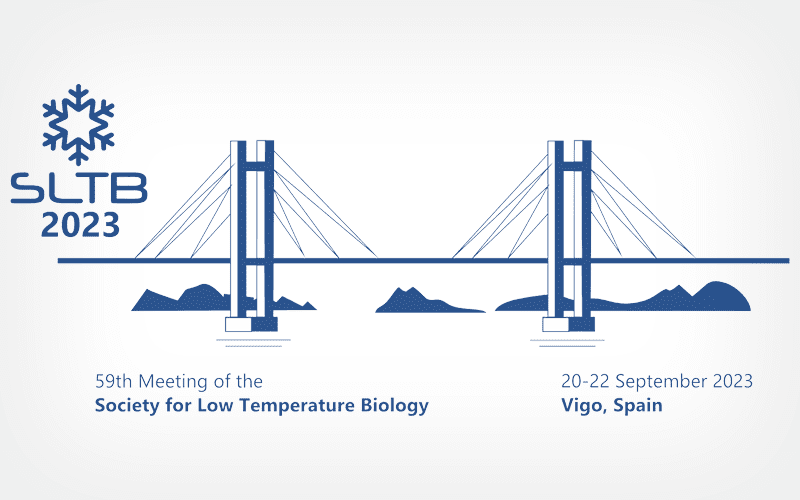CryoLetters Volume 45 - Issue 6
CryoLetters 45 (6), 329-339 (2024)
© CryoLetters, editor@cryoletters.org
doi.org/10.54680/fr24610110112
PERSPECTIVE: Transcriptomics of cryopreserved cells
Yelda Özden Çiftçi1,2,3* and Ergun Kaya4
- Gebze Technical University, Faculty of Basic Sciences, Molecular Biology and Genetics Department, 41400, Gebze / Kocaeli, Turkiye
- Gebze Technical University, Smart Agriculture Research and Application Center, 41400, Gebze / Kocaeli, Turkiye
- Gebze Technical University, Central Research Laboratory (GTU-MAR), 41400, Gebze / Kocaeli, Turkiye
- Muğla Sıtkı Koçman University, Faculty of Science, Molecular Biology and Genetics Department, 48000, Muğla, Turkiye
*Corresponding author’s E-mail: ozden@gtu.edu.tr
Abstract
Cryopreservation is a well-known strategy to conserve genetic resources at ultra-low temperature. However, there is still limited knowledge on the cellular processes and molecular adjustments that allow cells to withstand the multiple stresses to which they are exposed during cryopreservation. To evaluate these processes, transcriptomics, the sub-discipline of omics that simultaneously examines mRNA transcripts formed by transcription from the genome, has been recently used. This article reviews recent scientific studies which use the basic principles of cryopreservation practices together with transcriptomics approaches, within the conceptual framework of cryobiomics. Moreover, the connections between factors that may be useful to optimize and validate approaches for mammalian or plant cell cryopreservation are also assessed. Transcriptomic applications are mainly performed with methods such as reverse transcriptase polymerase chain reaction (RT-PCR), simultaneous polymerase chain reaction (real-time PCR), northern blot, microarray/biochip and gene expression analysis (SAGE). Transcriptomic technologies allow a global view of gene expression profiles of different mammalian or plant cell types to be obtained before and after cryopreservation under multiple stress conditions. For these processes, small amounts of RNA enable efficient transcriptomics analysis. Transcriptomic analysis of cryopreserved mammalian and plant cells provides a conceptual way to identify the genes and their relative alterations in transcriptional abundances together with non-coding RNAs involved in important pathways related to cell viability and proliferation during and after cryopreservation. Moreover, it greatly contributes to understanding of non-fatal cryodamage and related developmental disorders in cryopreserved mammalian oocytes and sperm. In addition, single cell transcriptomics has the potential to non-invasely monitor immune actions and to diagnose the stage of the inflammatory process in kidney. Finally, qRT-PCR and RNA-seq studies have also revealed that some transcription factors are effective at inducing cold tolerance in many plants by elevating the levels of soluble sugars, proline and unsaturated fatty acids in cells. Hence transcriptomics studies may also aid investigations of the main mechanisms behind the so-called ‘cryo-recalcitrance’ that is observed mostly in plant cells.
Keywords: cryopreservation; microarray; omics; real-time PCR; reverse-transcriptase PCR
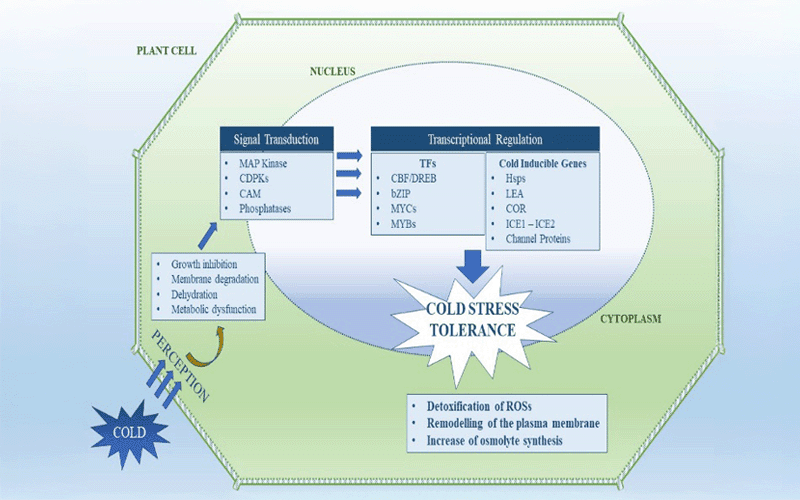
CryoLetters 45 (6), 340-348 (2024)
© CryoLetters, editor@cryoletters.org
doi.org/10.54680/fr24610110312
Cryopreservation protocol for cowpea pollen storage
Muthusamy Shankar1#, Ravi Gowthami2#, Kuldeep Tripathi2, Subhash Chander2, Doddamalur Appaji Deepak1 and Anuradha Agrawal2,3*
- Division of Plant Genetic Resources, ICAR-Indian Agricultural Research Institute, New Delhi-110012, India
- ICAR-National Bureau of Plant Genetic Resources (NBPGR), New Delhi-110012, India
- Present Affiliation: National Agricultural Higher Education Project, Indian Council of Agricultural Research (ICAR), New Delhi-110012, India
*Corresponding author’s E-mail: Anuradha.Agrawal@icar.gov.in
#Contributed equally and share first authorship
Abstract
Background
Long-term storage of cowpea pollen is important for the fertilization of spatially or temporally isolated female parents, especially during cowpea crop improvement and wide hybridization programs.
Objective
Experiments were conducted to determine pollen longevity at different storage temperatures and to develop a cryopreservation protocol for pollen of different cowpea accessions.
Materials and methods
The investigation was carried out at the Research Farm of ICAR-NBPGR, New Delhi, India, during the kharif (rainy) season of 2022. Pollen viability was studied after storage for 1, 3, 6, 12 and 24 h, 1 and 2 weeks and 1, 3 and 5 months at three different temperatures (4, -20 and -196 °C).
Results
Fresh pollen viability ranged from 78 to 91 %. The optimal pollen moisture content was 12-14 % and the optimal air desiccation period under the laminar air flow chamber (22±1 °C) was 5 min for subsequent preservation at -196 °C. Pollen viability was lost completely at 4 and -20 °C after 1 and 2 weeks of storage, respectively. Pollen stored in liquid nitrogen (-196 °C) retained vaiblity similar to that of fresh pollen for > 5 months storage. Pollination using cryostored pollen resulted in normal fertilization.
Conclusion
This finding opens a gateway for cowpea haploid germplasm conservation and wide hybridization programs.
Keywords: in vivo pollen germination; pollen cryopreservation; pollen storage; pollen viability; Vigna unguiculata
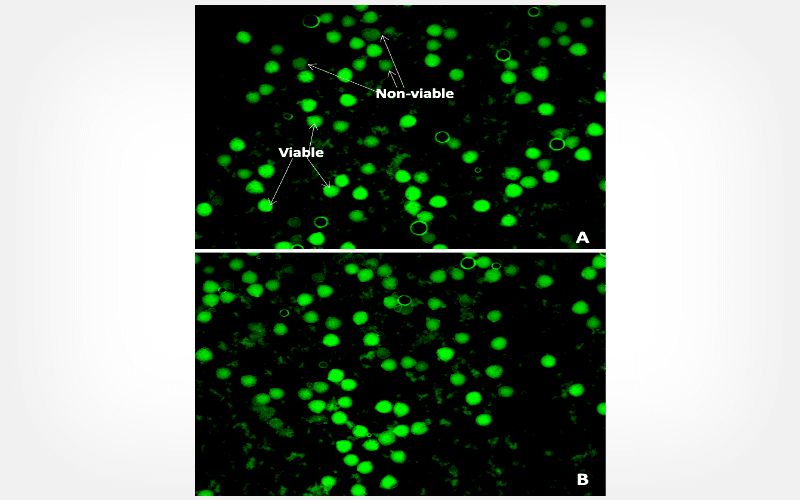
CryoLetters 45 (6), 349-354 (2024)
© CryoLetters, editor@cryoletters.org
doi.org/10.54680/fr24610110512
Effect of viscosity in the medium for sperm cryopreservation of golden eagle (Aquila chrysaetos)
José A. Herrera-Barragán1, Sofia S. Landa-García2, Fernando Gual Sill1
and Juan J. Pérez–Rivero1*
- Metropolitan Autonomous University, Department of Agricultural and Animal Production. UAM-X. Calzada del Hueso 1100, Villa Quietud, Coyoacán, CDMX. C.P. 04960, Mexico
- Metropolitan Autonomous University, Mastery in the Animal Reproduction Biology. UAM-I. San Rafael Atlixco 186, C.P., 09340, CDMX, Mexico
*Corresponding author’s E-mail: jjperez1_1999@yahoo.com
Abstract
Background
The development of assisted reproduction techniques for birds is useful for ex situ conservation but is limited. For the golden eagle (Aquila chrysaetos), only artificial insemination procedures using extenders developed over 50 years ago have been described.
Objective
To evaluate the effect of the viscosity of the cryopreservation medium on the acrosomal reaction ability of A. chrysaetos sperm.
Materials and methods
Viscosity was determined in 45 ejaculates. A design using the Lake medium, 6% dimethylacetamide (DMA), and Ficoll (10%, 35%, and 45%) was developed to create conditions of viscosity that was lower, similar, and higher than those determined in fresh semen.
Results
The viscosity of fresh semen was 3.2320 mPa/s. In aliquots of the Lake medium supplemented with 6% DMA and 10%, 35%, and 45% Ficoll, the viscosities were 2.1698 mPa/s, 3.5393 mPa/s, and 6.1123 mPa/s, respectively. Post-thaw, in the aliquot with 10% Ficoll, 74% of sperm were alive, with 28% mobility, and 21% exhibited an acrosomal reaction with percentages that were significantly lower (P<0.05) than those observed in sperm frozen with 30% and 45% Ficoll.
Conclusion
Viscosity has a positive influence on the viability of cryopreserved semen.
Keywords: acrosome; density; falconiforms; reproduction; semen

CryoLetters 45 (6), 355-360 (2024)
© CryoLetters, editor@cryoletters.org
doi.org/10.54680/fr24610110712
Effect of different semen extenders on cat epididymal semen cryopreservation
Tutku Can ACISU1, Serkan Ali AKARSU2*, Eren POLAT3, Yasin BAYKALIR4, Önder OTLU5, Aslıhan ÇAKIR CİHANGİROĞLU6, Nida BADILLI1, Abdurrahman ALAKUŞ6, Murat TANRISEVER, Mustafa SÖNMEZ1 and Emine ÜNSALDI3
- Department of Reproduction and Artificial Insemination, Faculty of Veterinary Medicine, Fırat University, Elazığ, Türkiye
- Department of Reproduction and Artificial Insemination, Faculty of Veterinary Medicine, Atatürk University, Erzurum, Türkiye
- Department of Surgery, Faculty of Veterinary Medicine, Fırat University, Elazığ, Türkiye
- Department of Biostatistics, Faculty of Veterinary Medicine, Balıkesir University, Balıkesir, Türkiye
- Department of Biochemistry, Faculty of Medicine, Malatya Turgut Özal University, Malatya, Türkiye
- Department of Reproduction and Artificial Insemination, Faculty of Veterinary Medicine, Siirt University, Siirt, Türkiye
*Corresponding author’s E-mail: serkanaliakarsu@gmail.com
Abstract
Background
Cryopreservation of spermatozoa is a biotechnology used for fertilization purposes and preservation of genetic material in various domestic species.
Objective
To determine the efficacy of two different commercial semen diluents in the cryopreservation of epididymal semen of domestic cats.
Materials and methods
Twenty male cats aged between 1- 3 years and weighing 2.5- 4.5 kg were used in the study. The testicular tissues removed from the cats were immediately brought to the laboratory in physiological saline and the epididymal parts were trimmed in commercial semen extenders (INRA 96, Group I; OPTIXCELL, Group II). Diluted semen samples were cooled to 4°C and filled into 0.25 mL straws. Semen samples were frozen in a programmable semen freezing device and then placed in a liquid nitrogen container at -196°C. Semen samples were thawed at 38°C for 25 s. Thawed semen samples were evaluated in terms of motility and kinematic parameters using CASA.
Results
No statistical difference was found between the groups in terms of total motility, progressive motility, and velocity parameters at 4°C. The rate of spermatozoa at slow speeds was found to be lower in group II. In addition, after freezing and thawing process, no statistical difference was observed between the groups in terms of motility, kinematics, and velocity parameters.
Conclusion
Both commercial semen extenders can be used for cryopreservation of cat epididymal semen.
Keywords: cat; cryopreservation; epididymis; semen extender; sperm
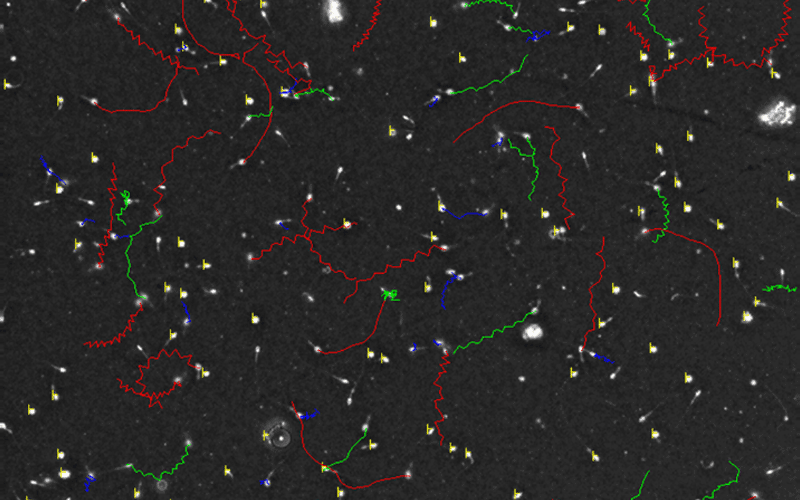
CryoLetters 45 (6), 361-369 (2024)
© CryoLetters, editor@cryoletters.org
doi.org/10.54680/fr24610110212
Cryoprotective effect of zinc and gold nanoparticles during cooling and freeze-thawing on Marwari stallion sperm parameters and reactive oxygen species production
Tipu Sultan1, Ashok Kumar Chaudhary1, JS Mehta1, Rajendra Mehra1, Anju Manuja2*, TR Talluri3* and TK Bhattacharya1
- College of Veterinary and Animal Sciences, Bikaner, Rajasthan, India
- ICAR- National Research Centre on Equines, Hisar, Haryana-125001, India
- ICAR- National Research Centre on Equines, Equine Production Campus, Bikaner, Rajasthan-334001, India
*Corresponding author’s E-mail: raotalluri79@gmail.com or Talluri.Rao@icar.gov.in
Abstract
Background
Sperm cryopreservation is one of the most important procedures in the development of biotechnologies for assisted reproduction. Cryopreservation of stallion spermatozoa tends to cause plasma membrane damage due to the low ratio of cholesterol to phospholipids. Different substances and compounds can be added to semen extenders to improve sperm quality.
Objective
To investigate the effect of supplementing semen extender with zinc nanoparticles (ZnONPs) and gold nanoparticles (AuNPs) on cooled and frozen-thawed spermatozoa of Marwari stallion.
Materials and methods
A total of 20 ejaculates from four Marwari stallions (five ejaculates from each) were collected. The gel free semen was extended with primary extender in equal volume and then divided in three equal groups, namely control (C), zinc (ZnO) and gold (Au), and centrifuged to obtain a final concentration of 100-150 x106 mL-1 and then cryopreserved. Cooled and post-thaw semen evaluations were conducted for various seminal characteristics, viz. progressive sperm motility, sperm plasma membrane integrity, sperm viability, acrosome integrity and mitochondrial membrane potential.
Results
Cooled semen (4°C for 2 h) evaluation revealed non-significant differences among the groups (C, ZnO and Au) for all the semen quality parameters. However, at the post-thaw stage, progressive sperm motility, sperm plasma membrane integrity, acrosome integrity and oxidative parameters were significantly (P≤0.01) higher in the ZnO group than Au and C.
Conclusion
The addition of ZnO nanoparticles improves the post thaw quality of stallion spermatozoa by reducing the oxidative stress, but Au nanoparticles had no effect on cooled as well as post-thaw semen quality.
Keywords: gold; nanoparticles; sperm motility; stallion semen; zinc

CryoLetters 45 (6), 370-379 (2024)
© CryoLetters, editor@cryoletters.org
doi.org/10.54680/fr24610110412
Cloning, expression, purification and enzymatic characterization of low-temperature cholesterol esterase from marine Panthenia agglutinosa
Zhenyong Wei1, Xuemei Chi1,2, Naiyu Chi1,2 and Qingfang Zhang1,2*
- Institute of Life and health, Dalian University, Dalian 116622, China
- Liaoning Marine Microbiology Engineering Technology Research Center, Dalian 116622, China
*Corresponding author’s E-mail: w245361787@163.com
Abstract
Background
The low-temperature cholesterol esterase is primarily used in industries such as papermaking and healthcare.
Objective
To discover a microorganism with high cholesterol esterase activity and tolerance to low temperatures, leading to the promotion of the sustainable utilization of marine cold-adapted microbial resources and fostering industrial development.
Materials and methods
This study isolated a strain producing low-temperature cholesterol esterase from marine samples in the China Bohai Sea. The strain was identified through 16S rDNA sequencing and named Panthenia agglutinosa Y03. The cholesterol esterase gene (PaChe) from P. agglutinosa Y03 was cloned and heterologously expressed in Escherichia coli, and the recombinant enzyme PaChe was purified and characterized. The structure of PaChe was predicted using AlphaFold2, and molecular docking was performed with cholesterol linoleate as the ligand.
Results
The enzyme protein has a molecular weight of 56.35 KDa, a theoretical pI of 7.24, lacks a signal peptide, and exhibits structural features of the α/β hydrolase superfamily protein. The concentration of the purified PaChe is 0.5 mg/mL, with a specific activity of 42.7 U/mg. The optimal working temperature is 30°C, and the enzyme retains activity at 4°C, demonstrating weaker thermal stability. The optimal pH is 7, and the enzyme maintains over 70% activity at pH 9. Na+, Ca2+ and Mg2+ are the primary activators, while Ba2+, Fe2+, Mn2+, Cu2+ and chemical agents such as SDS as inhibitors, with Cu2+ exhibiting particularly significant inhibitory effects.
Conclusion
This study establishes the theoretical groundwork for the development and utilization of a novel low-temperature cholesterol esterase.
Keywords: cholesterol esterase; cold-adapted enzyme; enzyme activity; marine
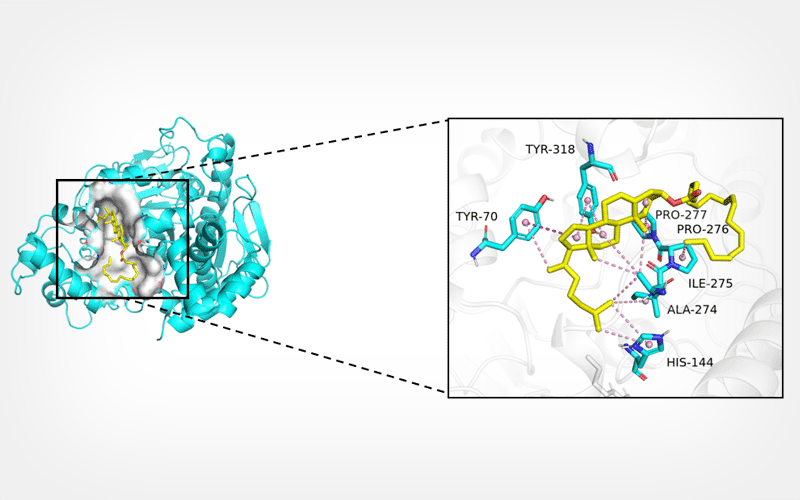
CryoLetters 45 (6), 380-387 (2024)
© CryoLetters, editor@cryoletters.org
doi.org/10.54680/fr24610110612
The optimal moisture content for cryopreservation of Longjing tea seeds
Danping Song, Ganesh K. Jaganathan*, Jiajin Li, Baolin Liu and Yingying Han
- Germplasm Conservation Laboratory, University of Shanghai for Science and Technology, Shanghai, China
*Corresponding author’s E-mail: jganeshcbe@gmail.com
Abstract
Background
Most plant species produce seeds that can be dried to c. 3-7% moisture content, i.e., orthodox, and successfully stored in liquid nitrogen. However, tea seeds are often described as ‘recalcitrant’, i.e., they die when to lower moisture levels safe for cryopreservation.
Objective
In this study, we investigated the tolerance to desiccation and freezing of Longjing tea (Camellia sinensis) seeds and analyzed the reason behind seed mortality during desiccation and cryopreservation.
Materials and methods
We analyzed the desiccation capacity of tea seeds from Hangzhou, China and subjected the desiccated seeds to programmed cooling and thermal analysis using differential scanning calorimeter (DSC). Subsequently, we used the exotherms to determine the frozen and unfrozen water. We analyzed seed germination and seedling establishment at different water content after storing seeds in liquid nitrogen and correlated the survival with the bound and unbound water.
Results
Results showed that the seeds could tolerate drying to 7.9% moisture content without significant viability loss. Moreover, the germination percentage declined sharply after cryopreservation, and the lowest moisture content at which a normal seedling could develop was 11.3±1%, although seeds dried to lower MC did germinate but did not grow into the seedling phase.
Conclusion
Longjing tea seeds used in this study were neither orthodox nor recalcitrant. We show that the interaction between lipids and freezable water in seeds may lead to the cryoinjury.
Keywords: cryopreservation; freezable water content; lipid transition; Longjing

CryoLetters 45 (1), 388-419 (2024)
© CryoLetters, editor@cryoletters.org
doi.org/10.54680/fr24610110812
Abstracts: 59th Annual Meeting of the Society for Low Temperature Biology
20-22th September 2023, Vigo, Spain
